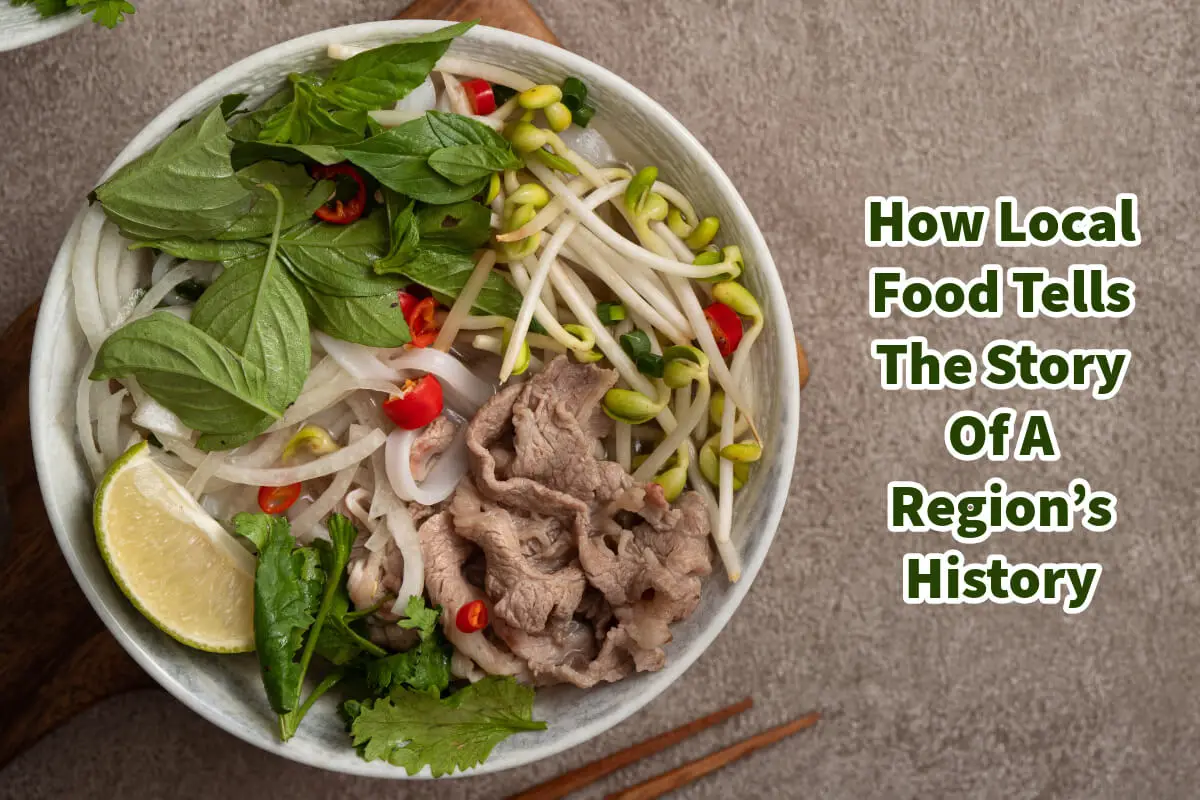Savoring a dish goes beyond satisfying hunger—it is a journey into the past, a way to understand how a region’s history, politics, and economy have shaped its flavors and traditions.
Food holds a region’s cultural identity narrative, with every ingredient, cooking method, and dish reflecting centuries of social and historical change. By examining local cuisine, we can uncover stories of colonization, trade, migration, and resilience that have defined entire societies. Read on as we explore how traditional local dishes tell the story of their regions’ histories, with a particular focus on Vietnam and Thailand. We will also touch upon other unique examples from around the world.
Table of Contents
- 12 Ways Local Food Tells the Story of a Region’s History
- 1. Vietnam: A Taste of Colonial Legacy and Resilience
- 2. Thailand: A Fusion of Trade and Tradition
- 3. Italy: A Culinary Map of History and Politics
- 4. Japan: Preservation of Tradition Through Cuisine
- 5. Mexico: Indigenous Roots and Colonial Influence
- 6. Ethiopia: A Taste of Ancient Traditions
- 7. Morocco: A Blend of Cultures in Every Bite
- 8. India: The Subcontinent’s Culinary Complexity
- 9. Lebanon: A Testament to Resilience and Tradition
- 10. China: Regional Stories in Every Bite
- 11. Spain: History on a Plate
- 12. Turkey: The Ottoman Influence on Modern Cuisine
- Related Questions
12 Ways Local Food Tells the Story of a Region’s History
Here are 12 ways local food tells the story of a country or region, showcasing how history and culture have profoundly influenced the cuisine. These culinary traditions reveal the unique narratives of the people, reflecting their past, heritage, and the rich cultural tapestry that shapes their food.
1. Vietnam: A Taste of Colonial Legacy and Resilience
French Influence on Vietnamese Cuisine
One of the most striking examples of how food tells a region’s story is found in Vietnam. A country rich in culture and history, Vietnam’s cuisine reflects its complex past, especially during French colonial rule from the mid-19th century to 1954. This colonial history is best represented in the beloved bánh mì, a sandwich that symbolizes the fusion of French and Vietnamese culinary traditions.
The Story Behind Bánh Mì:

The word bánh mì means “bread,” but it signifies much more. The French introduced the baguette to Vietnam during their colonization, and over time, the Vietnamese made it their own by filling it with local ingredients such as cilantro, pickled carrots, daikon, cucumber, and chili peppers, often with a protein such as pork or tofu.
This sandwich is a testament to how Vietnam adapted foreign elements and blended them with native flavors to create something unique that speaks to resilience and adaptation.
Pho and Cultural Identity

Another dish that exemplifies Vietnam’s story is pho, the iconic noodle soup synonymous with Vietnamese cuisine. Although the origins of pho are debated, it is widely believed to have been influenced by French pot-au-feu (a beef stew) and adapted by the Vietnamese.
This dish served with rice noodles, aromatic herbs, and thinly sliced beef or chicken, was initially popularized in northern Vietnam and later spread throughout the country. The story of pho also reflects the resilience of the Vietnamese people; during times of hardship, the dish evolved based on available resources, showcasing the ingenuity ingrained in the culture.
2. Thailand: A Fusion of Trade and Tradition
The Role of Trade in Shaping Thai Cuisine
Thailand’s cuisine is an intricate tapestry woven from centuries of trade and migration. At the heart of ancient trade routes, Thailand benefited from a continuous influx of ingredients and culinary ideas from China, India, Persia, and the Arab world.
This blend of influences can be seen in dishes like massaman curry, a richly spiced dish that incorporates cardamom, cinnamon, cloves, and star anise—elements not native to Thailand but brought by Muslim traders.
Massaman Curry’s Story:

CNN named Massaman Curry one of the world’s most delicious dishes. It is a clear example of a cultural and culinary exchange. Combining Thai ingredients like coconut milk and local spices with foreign elements introduced through trade tells a story of openness and adaptability. It speaks to Thailand’s strategic role in international commerce and its ability to integrate external influences while preserving its unique flavor profile.
Som Tum and Regional Differences
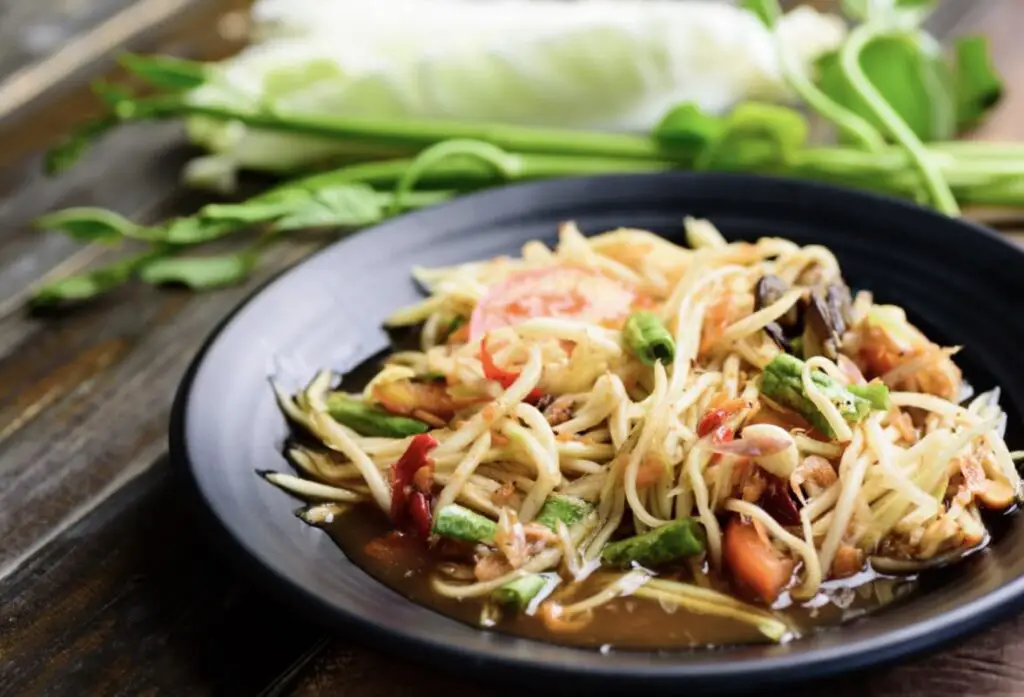
Som tum, or green papaya salad, is another dish that reflects Thailand’s regional diversity. Originating from the northeastern region of Isaan, som tum embodies the area’s simpler, rural lifestyle.
This dish, made from shredded green papaya, lime, fish sauce, garlic, and chili, represents the ingenuity of the local people who used readily available. The dish’s spicy and tangy profile symbolizes the bold and vibrant culture of the Isaan region, providing insights into the agricultural roots and communal dining traditions fundamental to Thai society.
3. Italy: A Culinary Map of History and Politics
The Roman Empire’s Lasting Impact
Italy’s food culture is perhaps one of the most famous in the world, yet each dish tells a different story of conquest, migration, and regional pride. Take pasta alla carbonara, for instance, a dish that originated in the Lazio region.
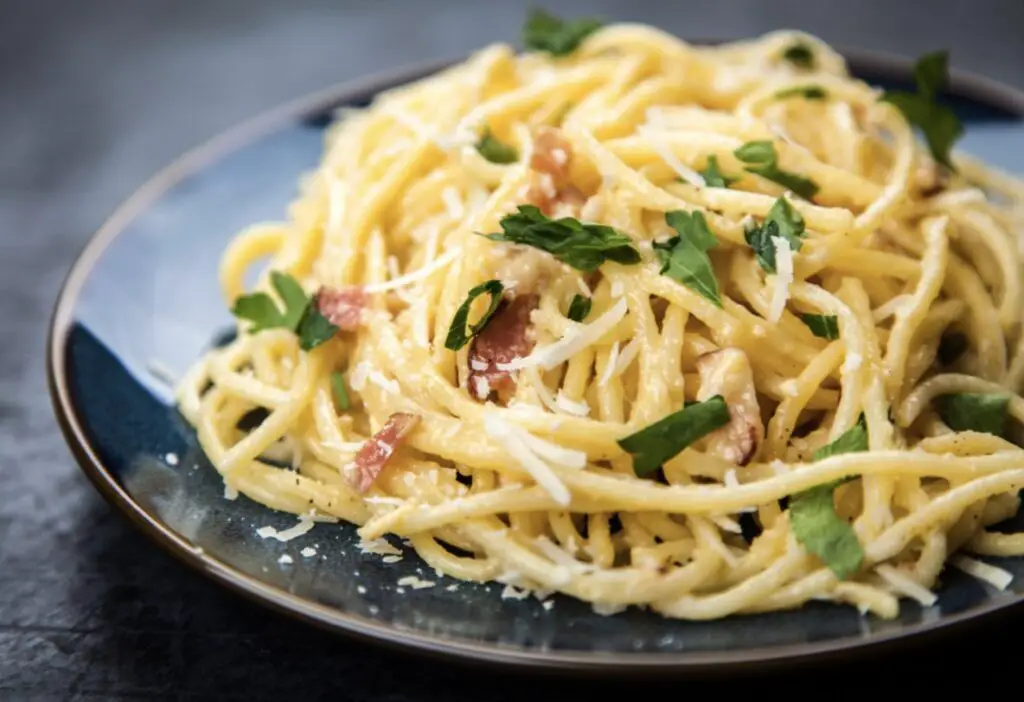
The legend of carbonara suggests it became popular after World War II when American troops stationed in Italy used their rations of bacon and eggs to create a dish with local pasta. This story highlights how external events and political conditions influenced local food practices, shaping dishes we now consider quintessentially Italian.
Sicily: A Blend of Arab and Mediterranean Flavors
The island of Sicily is a historical crossroads where various cultures have left their mark, most notably the Arabs. The Arab influence can be seen in arancini (stuffed rice balls) and caponata (a tangy eggplant salad).
These dishes feature a blend of raisins, almonds, and citrus fruits, showcasing the Arab traders’ impact on the island during the 9th and 10th centuries. Sicily’s food tells the story of conquest, trade, and cultural fusion, painting a picture of resilience and adaptability.
4. Japan: Preservation of Tradition Through Cuisine
Kaiseki: An Art Form Rooted in History

Kaiseki, a traditional multi-course Japanese meal, is a perfect example of how food can reflect history and philosophy. Originating from the 16th-century tea ceremonies, kaiseki embodies the principles of harmony, balance, and seasonality. Each course is prepared with meticulous attention to detail and presented as an artistic expression, showcasing the high value placed on aesthetics and seasonally available ingredients.
The Cultural Significance of Kaiseki:
This meal tells the story of Japan’s emphasis on mindfulness and integrating natural elements into daily life. The philosophy behind kaiseki—respect for the ingredients and minimalism—is deeply tied to the Zen principles that influenced Japanese culture, particularly during the Edo period.
Sushi and Global Adaptation
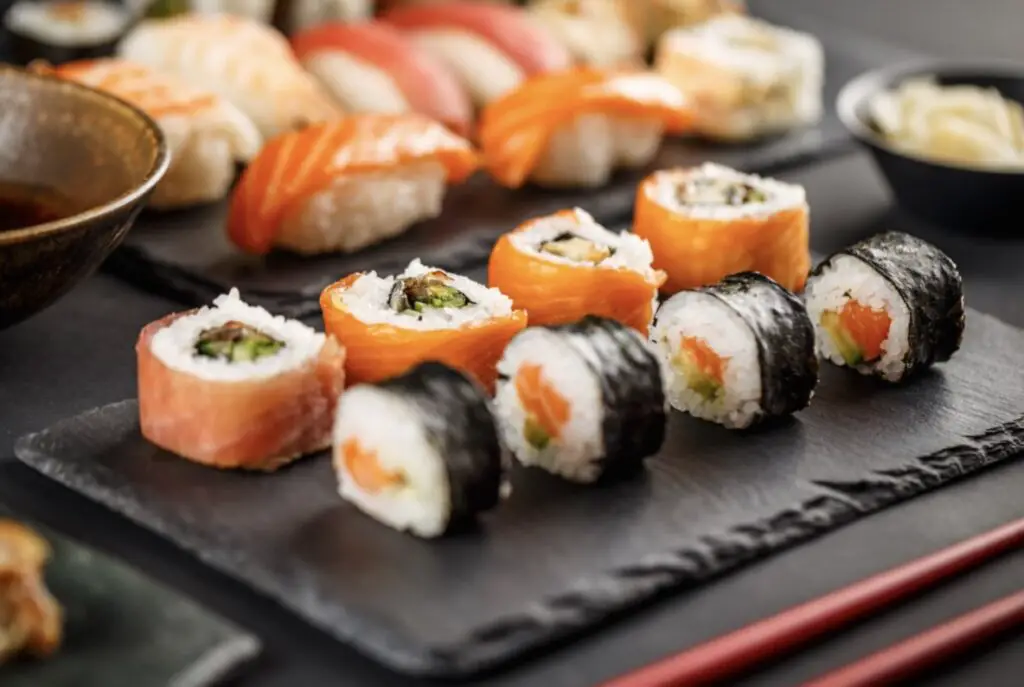
Sushi, another globally recognized dish, started as a method of preserving fish in fermented rice. The practice evolved into the fresh, vinegared rice and seafood delicacy we know today. The story of sushi is one of adaptation and innovation, reflecting Japan’s ability to modernize while holding onto traditional roots.
The Edo period it marked the emergence of the hand-pressed nigiri, symbolizing urbanization and the fast-paced lifestyle of the time. Today, sushi’s global popularity tells the story of cultural exchange and Japan’s impact on the international food scene.
5. Mexico: Indigenous Roots and Colonial Influence
The Story of Mole
One of Mexico’s most renowned dishes is mole, a complex sauce often containing chocolate, chili peppers, and a mix of spices. The origins of the mole are debated, but the most famous version, mole poblano, is said to have been created in Puebla.
This dish combines indigenous Mexican ingredients with elements introduced by the Spanish, such as nuts and spices. Mole tells the story of colonial influence merging with pre-Hispanic traditions, resulting in a dish that represents Mexico’s rich and multifaceted history.
Tacos: A Culinary Symbol of Adaptation
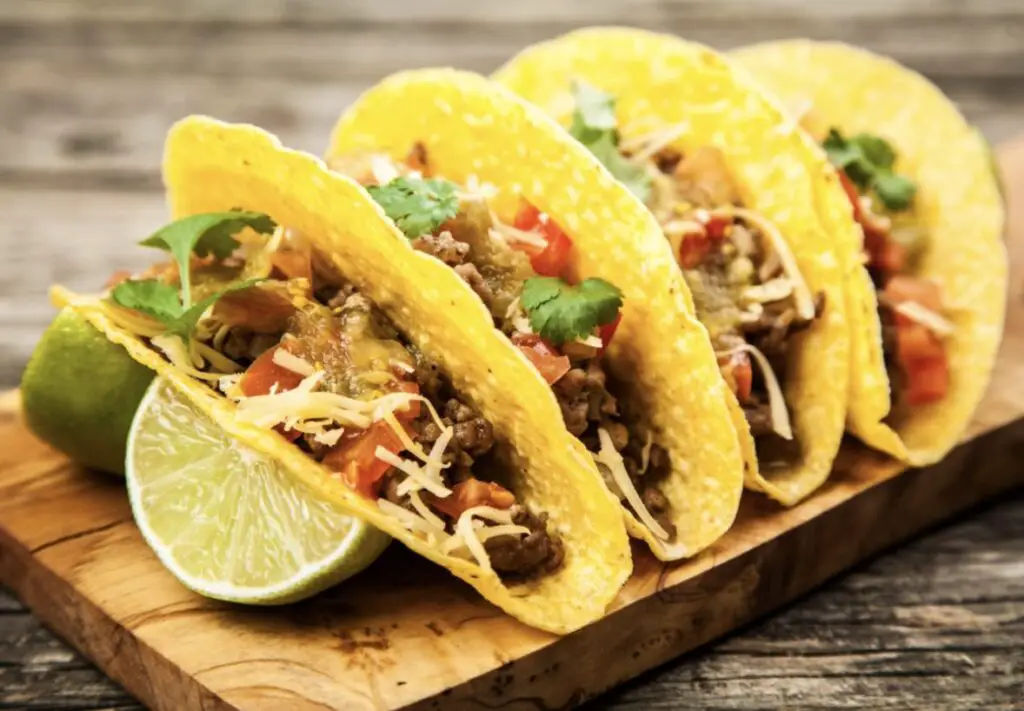
Tacos are not just street food but a testament to Mexican history and ingenuity. The simplicity of a tortilla filled with meat, vegetables, or seafood speaks to the adaptability of Mexican cuisine.
Over time, various regions developed their versions of tacos, from the fish tacos of Baja California to the hearty tacos al pastor, influenced by Lebanese immigrants who brought the technique of spit-roasting meat. This evolution of the taco showcases how migration and cultural interaction have continuously shaped Mexican food culture.
6. Ethiopia: A Taste of Ancient Traditions
Injera and Communal Dining
Ethiopian cuisine tells a story of communal living and ancient traditions through injera, a spongy, sourdough flatbread made from teff flour. Injera serves as a plate and a utensil to scoop up various stews and dishes like doro wat (spicy chicken stew) and misir wat (lentil stew). The tradition of sharing from the same plate symbolizes unity and community, values that are deeply ingrained in Ethiopian society.
Historical Context of Ethiopian Food

Ethiopia’s cuisine is influenced by centuries of trade with the Middle East and India, evident in the use of spices like cumin, cardamom, and turmeric. The story of injera also ties into the nation’s history as one of the few African countries that resisted colonization, maintaining its distinct culinary practices over time.
7. Morocco: A Blend of Cultures in Every Bite
The Richness of Tagine
Moroccan cuisine is a mosaic of Berber, Arab, and French influences, with the tagine as a culinary symbol. This slow-cooked stew, prepared in a cone-shaped clay pot, often incorporates sweet and savory ingredients like prunes, apricots, almonds, and lamb. Using spices such as saffron, cinnamon, and cumin tells the story of Morocco’s history as a major trading hub.
Cultural Layers of Moroccan Cusine
Each bite of tagine speaks of the interactions between native Berber communities and the waves of traders and settlers who passed through the region. The combination of preserved lemons and olives reflects Mediterranean influences, while the liberal use of spices tells of the centuries-old spice trade that shaped North Africa.
8. India: The Subcontinent’s Culinary Complexity
The Tale of Biryani

Biryani is a dish that embodies India’s layers of history and cultural complexity. This aromatic and flavorful rice dish has roots in Persian cuisine and was brought to India by the Mughals.
The Mughal emperors, known for their luxurious tastes, adapted biryani to suit local palates, incorporating Indian spices, saffron, and herbs. Over time, different regions of India put their spin on biryani, resulting in variations such as Hyderabadi biryani, with its bold spices and marinated meat, and the more subtly flavored Lucknowi (Awadhi) biryani.
Biryani’s Symbolism:
The dish tells the story of India’s conquest, migration, and fusion history. It is a testament to the country’s rich cultural diversity and the exchange of ideas and flavors that shaped its cuisine. Each region’s version of biryani reflects local ingredients, trade influences, and culinary techniques, making it a valid symbol of India’s layered and multifaceted identity.
Chaat: Street Food and Social Life
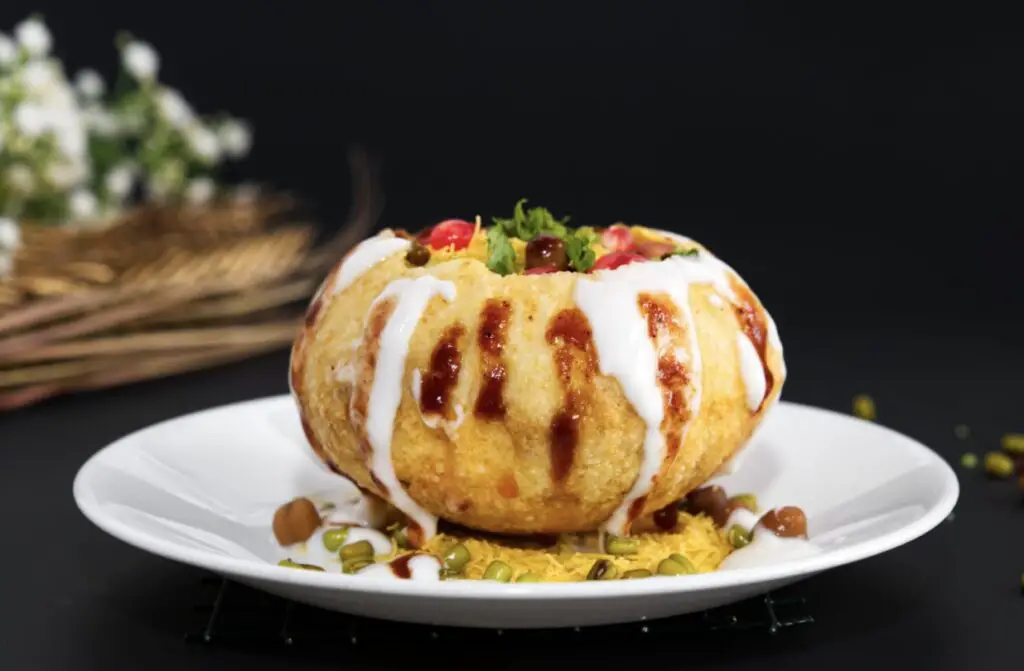
Chaat is another prime example of how food can represent a region’s social and historical fabric. Originating in the northern parts of India, chaat is a mix of fried dough, potatoes, yogurt, tamarind chutney, and spices. It is said that this popular street food emerged during the Mughal era as a means to stimulate the palate in hot weather.
Cultural Insight of Chaat
The bustling markets where chaat is sold tell stories of communal interaction and the hustle of Indian urban life. In these lively streets, filled with the sounds of vendors and the chatter of people, one gets a sense of the social dynamics that have defined Indian cities for centuries.
9. Lebanon: A Testament to Resilience and Tradition
Mezze: A Celebration of Hospitality
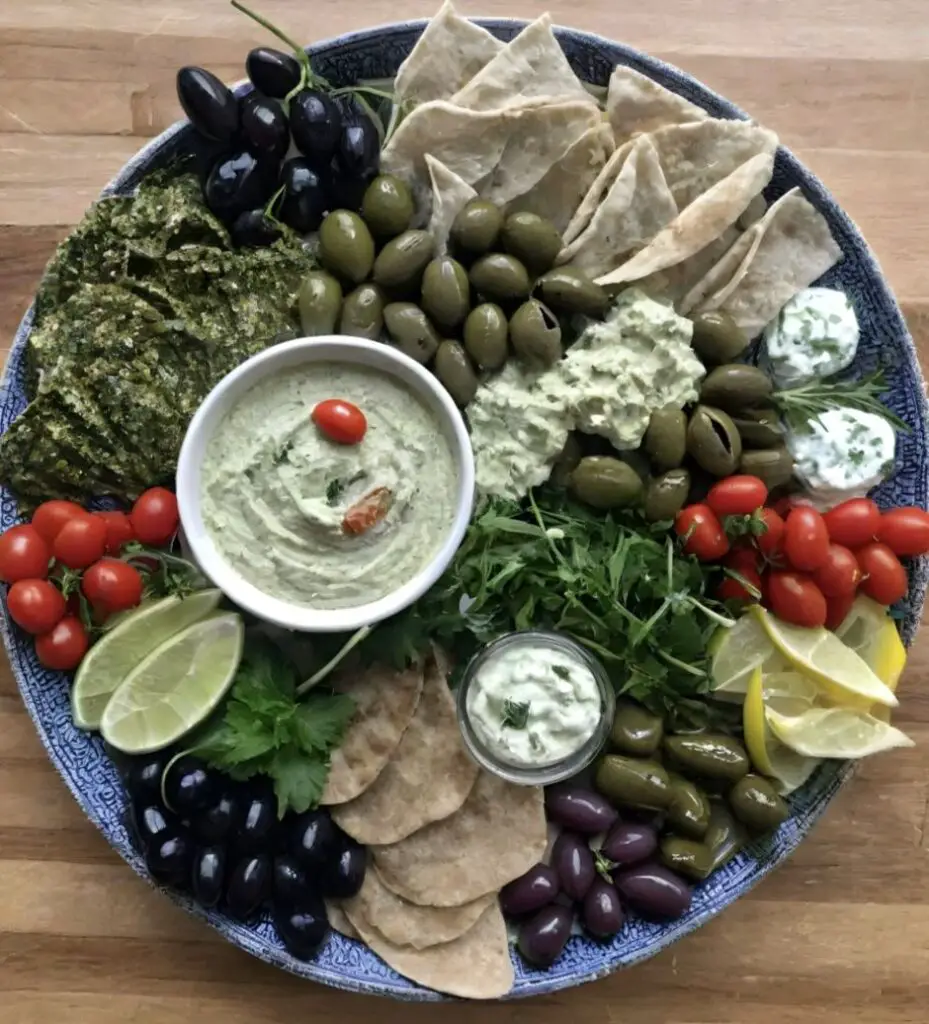
Lebanon’s famous mezze is more than just an array of appetizers; it represents the country’s deep-rooted culture of hospitality and resilience. A traditional spread of small dishes like hummus, baba ghanoush, tabbouleh, and falafel, mezze reflects the influence of various civilizations that have passed through Lebanon, including the Ottomans, French, and Arabs.
The Historical Context of Mezze:
This collection of dishes symbolizes Lebanon’s history as a cultural and trade crossroads. The use of chickpeas, olive oil, and fresh herbs highlights the region’s agricultural richness and the importance of sharing food as a communal activity. Despite the country’s complex history marked by conflict and change, mezze embodies the unyielding spirit of the Lebanese people and their love for food, family, and tradition.
10. China: Regional Stories in Every Bite
The Depth of Dim Sum

Dim sum, a culinary practice from the southern region of China, particularly Guangdong, reflects the ancient tradition of tea drinking and social gatherings. The word dim sum translates to “touch the heart,” it was initially served as a snack for travelers along the Silk Road. Over time, it became an integral part of yum cha (tea drinking), evolving into an assortment of small, flavorful dishes ranging from dumplings and buns to pastries and rolls.
Cultural Insights of Dim Sum
The practice of sharing dim sum tells the story of China’s emphasis on community and shared experiences. Dim sum restaurants, filled with the buzz of conversation and the clinking of teacups, are a microcosm of Chinese culture, highlighting its values of connection, tradition, and family.
Sichuan Cuisine and the Tale of Spice
Sichuan cuisine, known for its bold flavors and the numbing heat of Sichuan peppercorns, tells the story of the region’s geography and history. Located in southwestern China, Sichuan was historically isolated by mountains, contributing to the development of a distinct food culture. Preserved ingredients, such as pickled vegetables and fermented bean paste, reflect the necessity of food preservation in the past due to limited access to fresh ingredients.
Historical Perspective of Sichuan Food
The unique flavor profile of Sichuan dishes, characterized by the “mala” (numbing and spicy) sensation, showcases the influence of ancient trade routes that brought spices from India and beyond. This culinary tradition represents resilience, innovation, and the adaptation of local practices to global influences.
11. Spain: History on a Plate
Paella and Cultural Unity
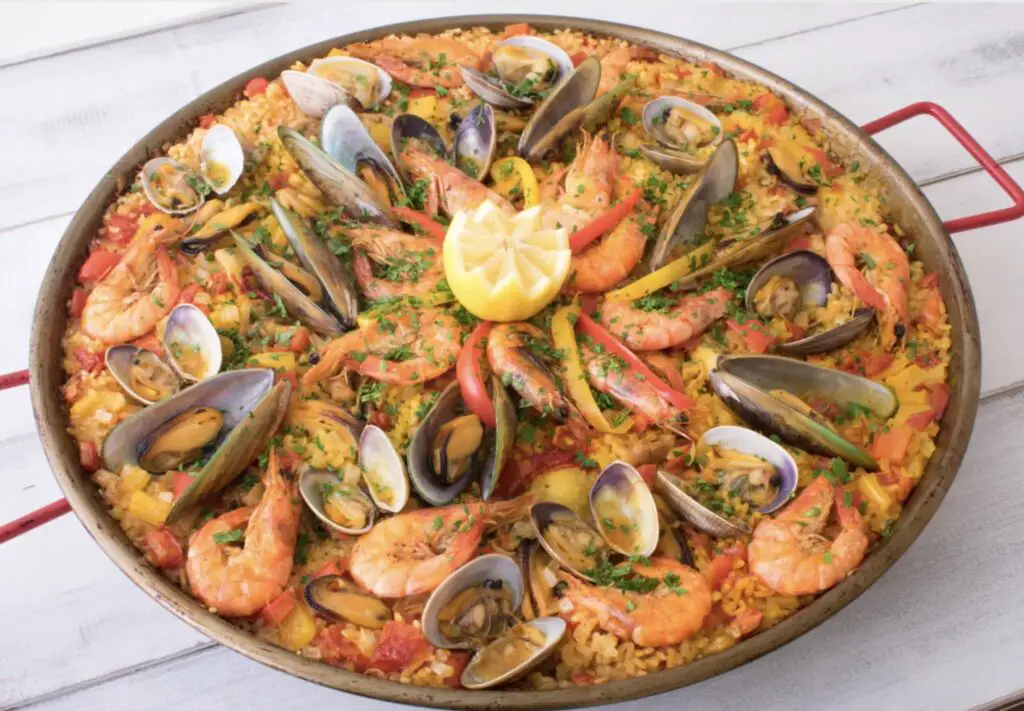
Paella, the iconic dish from Valencia, is much more than a meal; it symbolizes Spanish heritage and regional pride.
Originating from the rural areas of Valencia, paella was a farmers’ dish made from locally available ingredients like rice, saffron, and a mix of meat or seafood. The dish is traditionally cooked over an open flame in a wide, shallow pan, which allows the flavors to blend harmoniously.
The Story Paella Tells:
The dish reflects Spain’s history of agriculture and trade, particularly with the Moors, who introduced rice and saffron to the Iberian Peninsula. Today, paella serves as a unifying culinary symbol that brings together friends and families, embodying the Spanish value of togetherness and celebration.
Tapas: A Legacy of Innovation
Tapas, the small dishes served alongside drinks in Spanish bars, have their origins in practical necessity. It is said that King Alfonso X of Castile decreed that taverns should serve food with alcohol to prevent drunkenness. Over time, the practice evolved into a beloved social tradition highlighting the importance of connection and conversation in Spanish culture.
Cultural Insight of Tapas
Tapas tell a story of ingenuity and the evolution of Spanish social customs. They exemplify how the simple act of sharing food can foster community, making eating a social, rather than solitary, experience.
12. Turkey: The Ottoman Influence on Modern Cuisine
The Majesty of Baklava
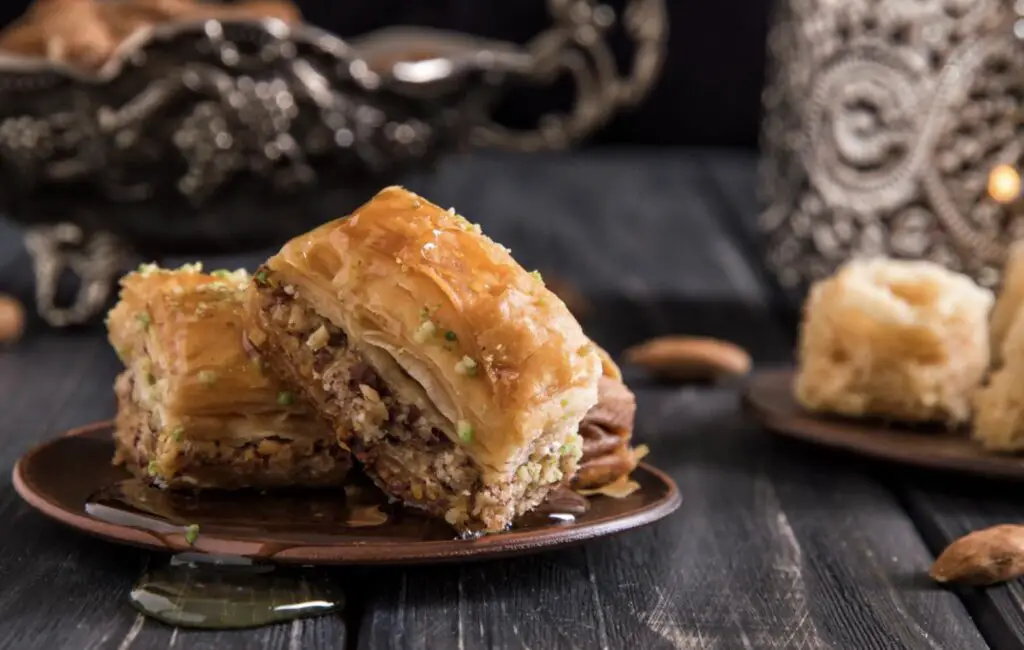
Baklava, with its layers of flaky pastry, nuts, and syrup or honey, is a dessert that represents the opulence of the Ottoman Empire. This dish, now famous throughout Turkey and the Middle East, is believed to have originated in the kitchens of the Topkapi Palace, where chefs perfected recipes that combined the best ingredients from across the empire.
Historical Context of Baklava
Baklava reflects the wealth and grandeur of the Ottoman period and the empire’s influence over a wide range of regions from Eastern Europe to North Africa. Its meticulous preparation, which requires layering thin sheets of dough and baking them with precision, speaks to the legacy of artistry and attention to detail in Turkish cuisine.
Kebab: The Story of Migration and Adaptation
Turkey’s love for kebabs is rooted in its nomadic past, with tribes cooking meat over open flames during their travels. Over centuries, kebab evolved into countless regional varieties, such as Adana kebab and İskender kebab, each with unique flavors and preparation methods.
Cultural Significance of the Kebab
The diverse range of kebabs showcases the influence of migrations and interactions with neighboring cultures, blending spices and cooking techniques that reflect the history of the region’s rich and varied landscape.
Food is more than sustenance; it is a storyteller who offers insights into a region’s history, culture, and identity. From the colonial influences evident in Vietnamese bánh mì to the ancient, communal roots of Ethiopian injera, the celebratory nature of Spanish paella, and the historic trade-infused flavors of Moroccan tagine, each dish carries the essence of the place it comes from.
By exploring traditional local dishes, travelers can uncover the unique stories that have shaped societies, understanding the ingredients and the journey of the people who made them part of their lives. Embracing regional cuisine is one of the most intimate ways to connect with the world’s diverse cultures, making history tangible, flavorful, and unforgettable.
At A Bus On A Dusty Road, we talk about history, travel, life, sailing, and ex-pat living. We are all about “Living Life As A Global Citizen.” We explore social, cultural, and economic issues and travel.
We would love to have you be part of our community. Sign up for our newsletter to keep up-to-date by clicking here. If you have any questions, please contact me, Anita, by clicking here.
Listen to our Podcast called Dusty Roads. You can find it on all major podcast platforms. Try out listening to one of our podcasts by clicking here.
Subscribe to our A Bus On A Dusty Road YouTube Channel with great videos and information by clicking here.
Related Questions
Asian Peanut Chicken Broccoli Brown Rice Salad Recipe
The allure of this salad lies in its vibrant dressing, a compelling blend of olive oil, zesty lime or lemon, aromatic ginger, robust garlic, and savory soy sauce. Such a combination ensures that creating this dish is a breeze. The chicken, marinated in garlic, ginger, soy sauce, and a splash of lime, is succulent and child-friendly, thanks to its infusion of flavors. Adding to the texture and depth, peanuts introduce a delightful crunch. Meanwhile, the broccoli and brown rice ensure you’re indulging in a healthful treat.
You can read more about Asian Peanut Chicken Broccoli Brown Rice Salad Recipe by clicking here.
Italian Crostata – Tomato, Basil, Garlic, Goat Cheese Recipe
The Italian Tomato Goat Cheese Crostata may echo elements of well-known classics, but this dish stands out as a distinctive gem in its league. In today’s post, we will journey through the intricacies of our Italian Tomato Goat Cheese Crostata Recipe, highlighting the vitality of fresh tomatoes and cherry tomatoes, the enchanting role of goat cheese, and the essence that defines a crostata.
By clicking here, you can discover Italian Crostata – Tomato, Basil, Garlic, Goat Cheese Recipe.
The Best Traditional British Fish And Chips Recipe
If you have a penchant for British Fish and Chips, you don’t need to journey to England to savor an authentic taste. With this recipe, you can whip up traditional-style fish and chips in the comfort of your own home.
The origins of fish and chips are fascinating, tracing back to how this dish became emblematic of England’s culinary culture. We also offer guidance on crafting impeccable fish and chips, ensuring a flavor reminiscent of a visit to a classic chippy in the U.K.
By clicking here, you can discover The Best Traditional British Fish And Chips Recipe.

